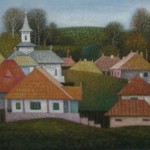Overview | History | Population |Location | Touristic Attractions | Tourism Infrastructure | Touristic Programs | Touristic Destinations | Associations | Accomodation
Using a public transport bus, or their own car, tourists can visit the touristic attractions in the surrounding county:
Constanța
- National History and Archeology Museum (Hamangia and Gumelnița Culture; objects from ancient times, Lapidarium, Ovidiu´s Room);
- Museum of Romanian Marine,
- Roman Edifice with Mosaic,

- Art Museum,
- National Military Museum,
- Ion Jalea Sculpture Museum,
- Natural Science Museum Complex (Aquarium Prof. Ion Borcea, dolphinarium, Micro Delta, etc.),
- Astronomy Complex (Planetarium, Astronomy Observatory, solar station),
- Romanian Orthodox Episcopal Cathedral (built in 1883), the Spanish Temple mosaic, the Great Mosque (Byzantine – Egyptian style, with Romanian influence, built in 1822),
- The Casino (French Baroque style, with Rococo elements, built in 1909),
- The Genovese Lighthouse (14th century), the new lighthouse (1958), the commercial port (1857),
- Tomis touristic harbour
Adamclisi
- The Museum Complex (Museum Tropaeum Traiani
 , the funerary altar, the mausoleum, the castrum Tropaeum Traiani, the Museum of Archeology)
, the funerary altar, the mausoleum, the castrum Tropaeum Traiani, the Museum of Archeology)
Murfatlar
- The Complex of Monasteries (archeological and Christian sites), the Museum of Dobrogean Winegrowing
Cernavodă
- Archeological ve
 stiges of the Hamangia, Gumelnița and Cernavodă cultures,
stiges of the Hamangia, Gumelnița and Cernavodă cultures, - The Anghel Saligny bridge and the longest viaducts in Europe,
- Fossils (reservations, fossils of fauna and flora)
Rasova
- The ruins of the Roman fortification Flaviana (from the era of Constantin the Great)
Hârșova
- The ruins of the Roman castrum Carsium, founded by Emperor Trajan in 103 AD.
Histria
- Histria castrum (the first Greek
 colony of the Pontus Euxinus sea shore, founded by the sailors of Milet in 657 BC)
colony of the Pontus Euxinus sea shore, founded by the sailors of Milet in 657 BC) - The Museum of Archeology Histria (elements of Romanian construction, bas-reliefs, statuettes, adornments, Green and Roman pottery)
Mangalia
- Vestiges of Callatis Citadel, built between 4th and 7th century AD
 (the ancient Calatis port, the Roman aqueduct, antique engravings, Syrian basilicas),
(the ancient Calatis port, the Roman aqueduct, antique engravings, Syrian basilicas), - The Museum of Archeology Callatis (1925) (Greek and Roman antiquities: antique columns, bas-reliefs, sculptures, adornments, fine alabaster ceramics, statuettes, coins),
- The Mercutius Curiosity Collection (stamps, lithography, clocks, paintings, sculptures, graphic works),
- Esmahan[OPO1] Sultan Mosque (1525), monument in Mudéjar style (Oriental carpets, ritual fountain, Lapidarium, Turkish graveyard)
Medgidia
- The Museum of Art Lucian Grigorescu,

- The Great Mosque (architecture monument in Mudéjar style, from 1856)
Mircea Vodă
- Roman walls
Ostrov
- The ruins of Dervent (Roman-Byzantine citadel)
Șipotele village
Cheia
- Cheia massif – natural, botanical, geological reservation (coral reef stones, Mediterranean plants, caves).
Ion Corvin
- Reservation with wild bisons and deer
Limanu village
Limanu Cave, speological reservation; art collection (paintings, sculptures , graphic works)
, graphic works)
[OPO1]Trebuie corectat în original, numele corect e Esmahan, nu Eshmahan.
